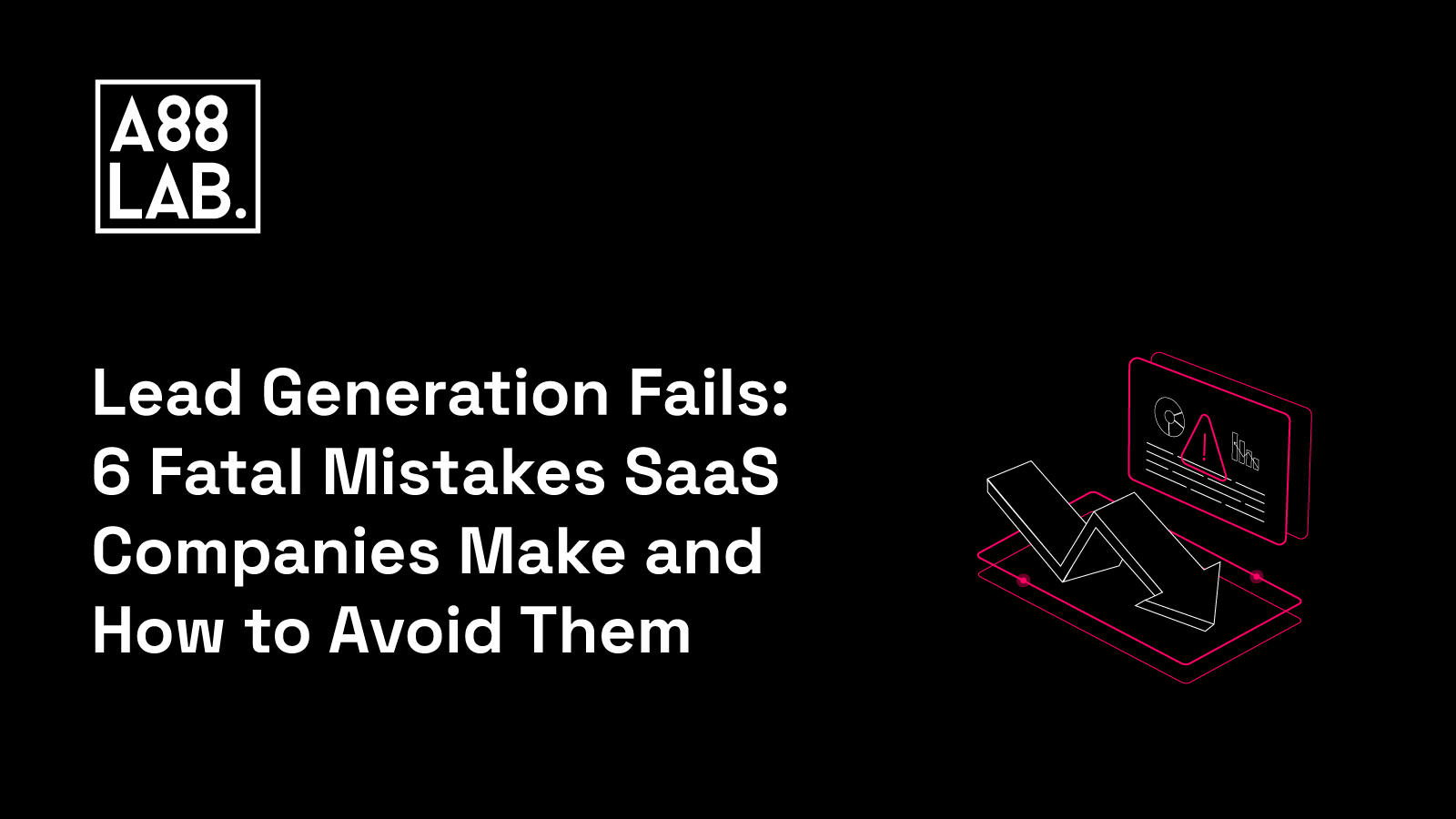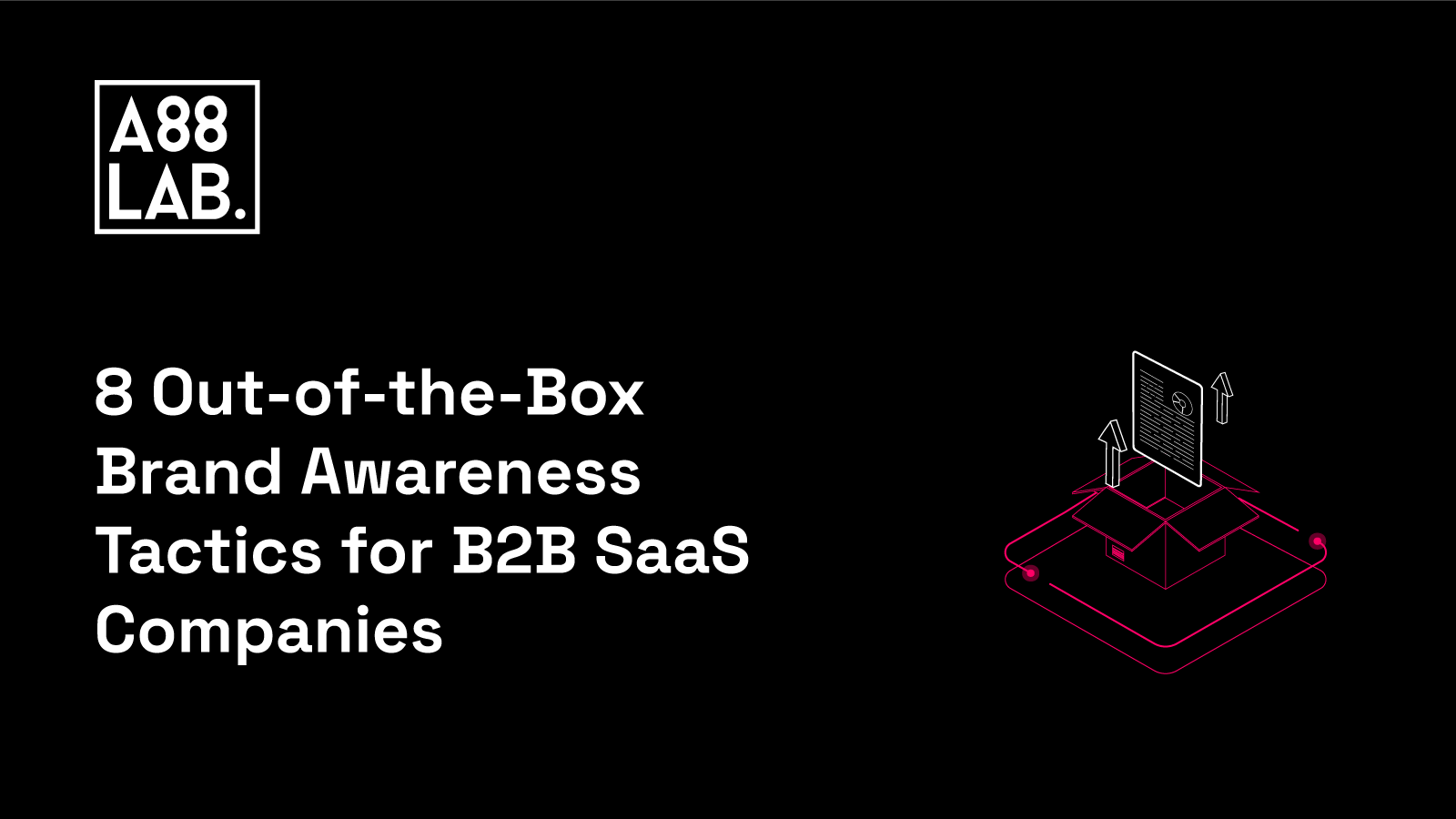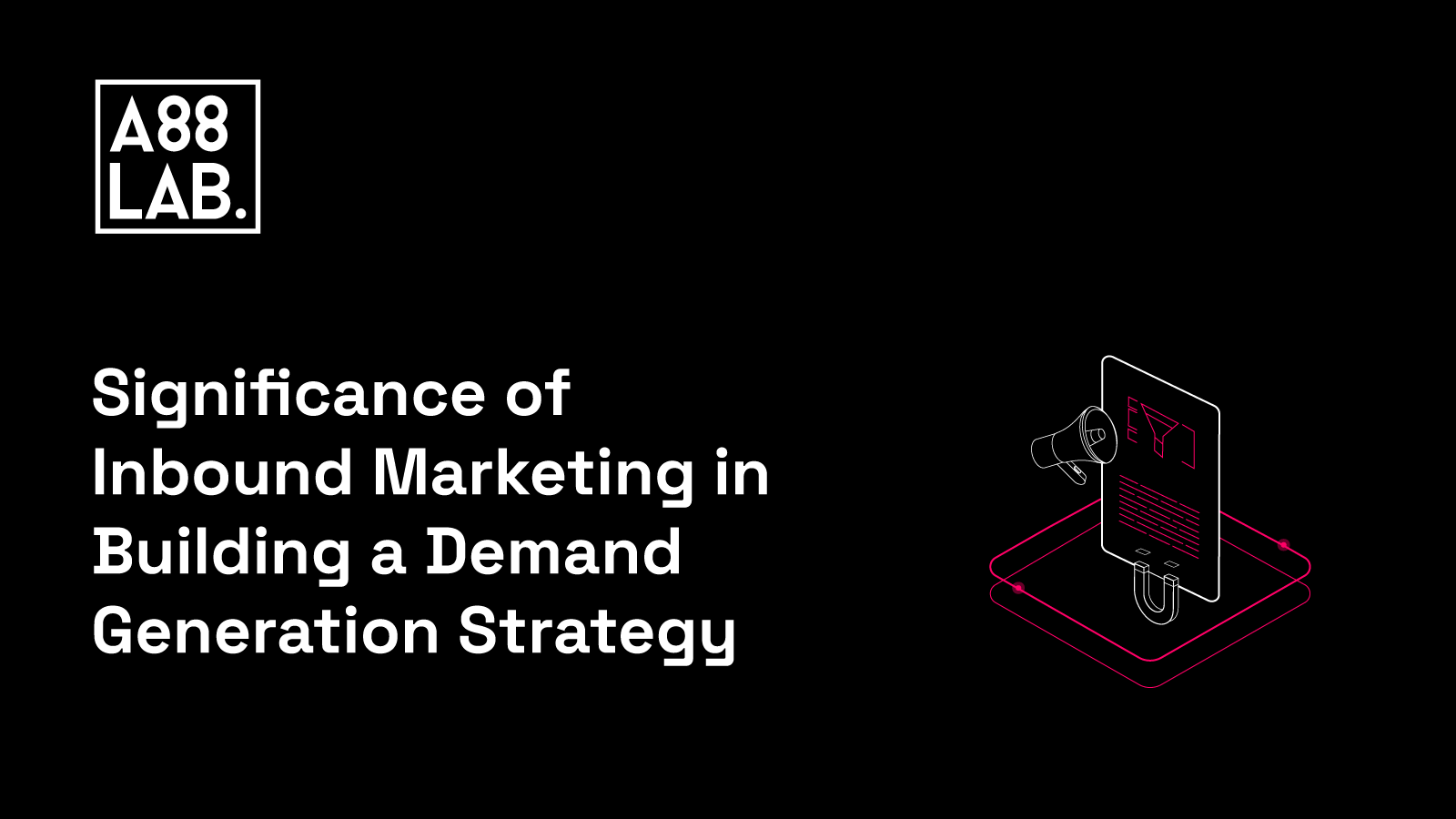Lead generation is not dead!
Many marketers became obsessed with the Demand Generation trend that began about two years ago while disregarding the significance of lead generation as an outdated strategy that lacks significant outcomes.
Generating leads can be a challenge for companies due to common misconceptions and incorrect approaches.
The process of generating leads is an essential step in the sales process, as it marks the beginning of the journey toward a successful sale. It is crucial to understand that not all actions taken by prospects, such as filling out a form, signing up for a free trial, or a newsletter, signify that they are quality leads. This is a common misconception that can only lead to wasted time and resources.
Recent research conducted by HubSpot has revealed that over 60% of marketing teams find generating more traffic and new leads to be the most challenging aspect of their job.
According to Semrush research, generating leads is one of the top priorities for almost all marketers. When it comes to SaaS companies, in particular, generating leads can make the difference between success and failure.
Therefore, it is essential for them to avoid the six fatal mistakes commonly made in the lead generation process. Let’s elaborate on them closely.
1. Attracting and Targeting Wrong Leads
Not everyone you'll come across will be your lead, not everyone will be interested in what you have to offer, and that's perfectly fine. The problem happens when you lose sight of who your leads are, fall into the never-ending cycle of continuously pursuing the wrong kind of prospects, and end up not generating any leads.
To avoid this trap of going in the wrong direction, always remember your leads should represent a defined, specific group of prospects who have the potential to become the desired customers you want to reach and sell your product or service to.
Here are the 3 most common mistakes we can often recognize in SaaS companies that result in attracting and targeting the wrong leads that can be easily overcome.
Positioning Your SaaS Product as a Product Meant for Everyone
When promoting your SaaS product, using a one-size-fits-all approach may seem like a good idea, but it can actually hinder your success. Different industries have unique needs, and a generic message won't resonate with the right users. For instance, a SaaS product that's tailored for mining operations may not have the necessary features for healthcare providers. To maximize your product's effectiveness, it's crucial to target it to a specific audience. This way, you can better understand and address the needs and concerns of your target market, and increase your chances of achieving success.
Your Website Visitors Go Up, but Conversion Down
If you're receiving a lot of visitors to your website, but you're lacking success in converting them into customers, you probably have an effective marketing campaign, but it's targeted towards the wrong kind of audience. Essentially you don't wanna spend all of your time and resources on people who only came by to browse. To maximize your sales potential, it's crucial to focus your efforts on attracting potential customers who have a genuine interest in your product or service, rather than those who are simply browsing the web. Remember, while attracting visitors is important, the ultimate goal of any business is to generate revenue.
Low CTR (Click-Through-Rate) Across Channels
If you are encountering a low CTR in your various channels, it is possible that your messages are not being delivered to the right audience. It is important to note that even if your emails are being opened or your social media ads are being clicked on, if no further engagement is being observed, it is a clear indication that it is time to modify your targeting settings. It is essential to examine and analyze your intended target audience and ensure that your message and content align with their interests and preferences. This will help improve your CTR, boost engagement, and ultimately lead to better conversion rates.
2. Overlooking Lead Nurturing
Building strong and lasting relationships with your current prospects through lead nurturing increases the chances of turning them into customers. In fact, lead nurturing strategies are crucial for the success of many SaaS companies. Converting potential customers into loyal ones ensures a consistent revenue flow. Unfortunately, many SaaS companies tend to overlook the power of this process, resulting in missed conversion opportunities. Verse report shows that even 41% of companies experience difficulty in promptly following up with leads, and 44% of their sales representatives are too busy to manage it.When SaaS companies face difficulties with the lead nurturing process, they can end up reducing sales and ROI. Recognize these common mistakes made in this process on time and develop strategies to overcome them to prevent these problems.
Addressing these challenges will help SaaS companies improve their sales pipelines and achieve greater success:
- Lack of research leading to ineffective personalization: Without understanding leads' interests and needs, SaaS marketers can't personalize interactions properly. Conducting research using tools like SalesIntel can help segment and personalize content for leads, increasing the effectiveness of nurturing.
- Slow and unclear conversion process: If the conversion process is slow and unclear, it can turn away potential buyers. To ensure successful conversions, it's important to have clear landing pages, concise CTAs, and consistent messaging from lead response to subscription.
- Poor sales pitch: SaaS leads need clear and convincing information about the benefits, unique selling points, and how the product will specifically address their needs. Sales representatives and content writers who are well-prepared can make all the difference in creating a compelling pitch.
- Avoiding automation: For successfully nurturing SaaS leads, automation has become essential. Sales and marketing software allows for personalized communication with potential clients, which in turn allows sales reps to focus on more direct interactions. This automation increases efficiency and engagement, ultimately leading to growth in the database and increased sales.
If the goal of your SaaS company is to start seeing results from your lead generation campaign, it’s time for it to start establishing relationships with potential customers, properly understand their needs and preferences, and eventually convert them into loyal paying customers.
The benefits of lead nurturing in the SaaS industry are numerous, including increased sales through higher conversion rates and greater customer loyalty. Moreover, nurturing leads can also make the sales process more efficient by collecting information upfront. Therefore, dedicating time to nurturing leads is an essential part of any SaaS sales process, and it can bring substantial benefits, increase your customer base, and, ultimately, grow your business.
3. Not Defining an Ideal Customer Profile (ICP)
As a SaaS company having a clear understanding of your ideal customer profile when generating leads is crucial. Creating an ideal customer profile (ICP) is especially useful for SaaS because it allows them to focus on their priority target accounts.
If your ICP isn’t spot on, all your efforts for successful lead generation will be ineffective, and it will be more difficult to get back on track. The dangers of having too generic or inaccurate ICP could result in misguided marketing and sales efforts, wasting resources on leads unlikely to convert while overlooking potential customers who align with your offerings. Even if you have great channels and execution, they won't attract the right audience or could even turn people away.
To avoid these types of dangers about your ICP ever happening and make sure you create an accurate and detailed one for your SaaS, there are several steps you must follow:
Step 1. Identify your top five customers based on subscription revenue, customer lifetime value (CLV), and ease of use of your platform.
Step 2. Identify your bottom five customers based on their low usage of your platform, low CLV, and high customer churn rate.
Step 3. Create profiles for each customer, including their industry, company size, number of users, main use cases, and any unique needs or challenges they face.
Step 4. Look at the trigger events that led these customers to your platform, such as changes in their technology stack, business processes, or team structure.
Step 5. Analyze what your best and worst customers have in common and identify where your target market lies. Your best and worst customers should differ significantly in terms of their needs, challenges, and usage patterns.
Developing an ICP is a crucial step in improving your SaaS business. By understanding the needs, preferences, and behaviors of your target audience, you can tailor your sales and marketing efforts to resonate with them and increase customer acquisition and retention. Having a well-defined ICP also helps you allocate your resources effectively and optimize your product offerings to meet the demands of your ideal customers.
4. Not Generating Enough Inbound Traffic
Inbound leads cost 61% less than outbound. Unfortunately, many SaaS companies experience difficulties trying to drive inbound traffic to their platform. Despite offering comprehensive solutions, their inbound strategies may still fall short in capturing the attention of their intended audience, thereby making it difficult to convert leads.There can be several factors responsible for this challenge:
- People may have difficulty finding you on search engines when searching for topics related to your SaaS product.
- You may not be connecting with potential buyers at the right time in their decision-making process.
- Your social media presence may lack a clear strategy, which is important for buyers' research in the SaaS industry.
Additionally, you may not be creating and sharing key content such as eBooks, case studies, and guides that showcase the benefits of your SaaS product, or you may not have a system in place to gain and engage subscribers for newsletters and announcements related to your SaaS product.
To address these issues as a SaaS business, consider creating content that addresses your buyers' problems and needs specifically related to your SaaS product, with appealing incentives. Match your content to where the buyer is in their decision-making process for a SaaS product, use clear CTA on your website and emails, and make sure those CTAs lead to attractive, relevant pages that highlight the unique features of your SaaS product.
Ask for a bit of information when people download content related to your SaaS product so you can keep in touch, keep track of your visitors, prospects, and leads, and tailor content that offers to what your ideal buyers want.
5. Adopting a One-Size-Fits-All Approach
While searching for "lead generation tips" on Google may provide some helpful guidance, it's important to remember that every SaaS business requires a unique approach. Factors such as the type of SaaS product, the target audience, and the marketing budget all play a crucial role in developing an effective lead generation strategy.
For example, a self-serve SaaS product that offers a free trial may benefit from a channel-focused approach that drives traffic to a landing page. On the other hand, an enterprise-level SaaS product that requires installation and integrations may require longer-term lead nurturing and account-based marketing.
It's important to avoid a one-size-fits-all approach when it comes to lead generation for SaaS. Instead, take the time to develop a custom recipe that suits your business's specific needs. This may involve experimenting with various channels and tactics, analyzing data to understand what's working and what's not, and continually refining your approach over time. By taking a strategic and data-driven approach to lead generation, you can maximize the potential of your SaaS product and drive sustainable growth for your business.
6. Ignoring Prospects' Pain Points
Understanding your target audience's pain points can help you create content that best resonates with them. For SaaS lead generation, it's important to keep the focus on your potential customers and how your product can address their specific needs.
It can be tempting to focus solely on promoting your product or service and lose sight of what truly matters - identifying and addressing the pain points of your potential customers. Understanding the needs and challenges of your target audience in order to successfully attract and retain them is essential.
Create content that speaks directly to their pain points, whether it's through a blog post, video, or podcast. When a prospect shows interest in that content, it's a clear sign that they're experiencing that particular issue. Use this opportunity to remarket to them and provide more information about how your SaaS product can help solve their problem.
Throughout their journey, from the top of the funnel to onboarding and beyond, continue to focus on their pain points and how your product can provide value. By doing so, you'll build trust with your potential customers and increase your chances of converting them into paying customers. Remember, it's all about understanding your audience and providing them with solutions to their pain points.
Conclusion
Lead generation is the heart of a successful sales process for SaaS companies. Unfortunately, there are common mistakes that can hinder its effectiveness. To maintain growth and a healthy sales pipeline, it's crucial for SaaS companies to recognize and address these pitfalls.
Attracting the right leads is a critical first step. Using a broad approach might seem like a quick way to make your product attractive, but it actually weakens your message and confuses potential customers. Instead, focus on a particular group of people with specific traits, interests, and industry requirements.
.png)


